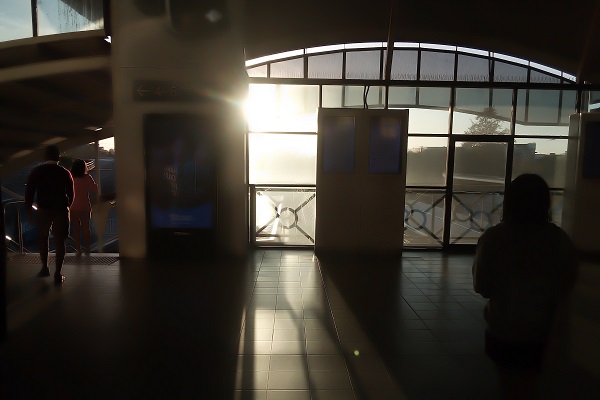For probably about as long as there have been humans staring up at the sky and wondering "big hot shiny thing what makes light and stuff", there have been people wanting to make use of it. Even the animals know that when it is light-time is is time to do stuff and when it is dark-time then it is time to pester the humans for food and warmth. The rotation of the Earth and the transit of the sun across the sky are insanely reliable, for as long as we keep on spinning round we get new days.
Sundials exist in cultures all over the world and very very sophisticated sundials are even able to make use of and predict solstices and equinoxes. Our rather nonsensical calendar is still sort of able to ring out the four quarters of the year with alarming accuracy.
This brings me onto the subject of henges. Nobody really knows what Stonehenge in Wiltshire (just off the A303 near Amesbury) is for but it likely is some kind of solstice/equinox device, with some hitherto unknown religious overlay. <Insert story about druids, bla de bla de bla... the rabbit of Blaaargh! Insert story about rock and roll et cetera. Insert pun. Insert meta joke about meta jokes and inserts>
One morning as I was passing through Blacktown Station (which is famous for its absolute animals and people who do not return shopping trolleys), as I was tapping on to come through the passimeter gates, I was blinded by the light of the big hot shiny thing what makes light and stuff. It is highly likely that a roughly east-west aligned station is going to have the sun shine through these big windows in the morning and the other big windows on the other side and so it isn't exactly the best candidate to demonstrate this but it does open up the concept.
There are accidental henges everywhere.
To be fair, I don't actually know what a henge is. What I mean by that statement is that because we have a big hot shiny orb which moves through the sky and at various heights, then it stands to reason that there will be by sheer accident, places which align with the sun perfectly. The proper definition of a henge is likely something else but I do not care. The word is so strange that it almost demands its own very specific definition. If you have a shaft of light, shining through a very specific gap, such that it aligns perfectly, then I think you have a henge.
The law of large numbers states that if you perform an experiment often enough, you will get the desired result. This is why an infinite number of monkeys typing on an infinite number of typewriters should be able to generate the entire works of Shakespeare at some point in eternity. Since as humans it is our wont to build all kinds of everything everywhere and in all kinds of random directions, then we have loads of in situ henge experiments going on.
I was already primed to look for henges. On January 24, the sun came in through our offices at work and aligned perfectly, such that before I opened the front door at 08:30am, I could see the light peeking in underneath the door. The weird thing is that it only does this on January 24th which is 33 days after the summer solstice and on November 19 which is 33 days before the summer solstice. For reasons to do with inclination, it never does it at any other time if the year. The accidental henge in our offices is created by the light coming in through the window and the very specific arrangement of the alignment of the building and the furniture inside.
Light, as indeed electromagnetic radiation generally, radiates from a transmission point in all directions, and then travels in perfectly straight lines. This is why shadows are crisp, why lasers are straight and why unless there is something in the way you need direct line of sight with a radio transmission object (that thing in the way might be mountains, maybe the atmosphere or a black hole if you want to bend the beam, or perhaps even just raindrops if you are trying to pick up digital TV on a rainy day).
This also explains why even though the Voyager 2 spacecraft; which is operating on not much more power than a small battery powered torch at this point, is able to point its transmissions back at Earth across the vast empty expanses of space. Space is mostly that - space.
Really precise henges make use of the fact that sunlight can only come from that particular angle with a really particular set of conditions, such as it being the solstice. Imprecise henges make use of that same fact, which is why verandahs if properly designed will allow sunlight into a room during the coldest of months but not the heights of summer. Really really imprecise henges will allow light in for most of the day; we call that a window.
Our wee henge at Blacktown Station, created by the window frame and the indicator board, must at some point line up perfectly with the tiles on the floor. Someone who is better at maths than I can probably calculate the exact times when this should happen, but already with a few days having past since I took this photograph, it does not line up as well at this time of day any more.


No comments:
Post a Comment